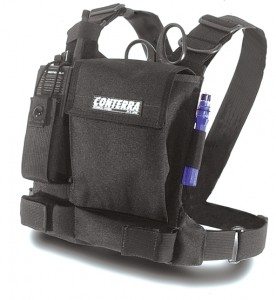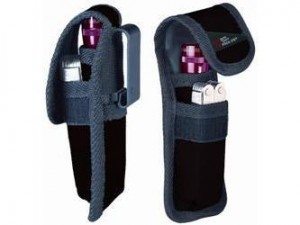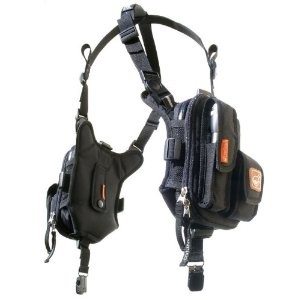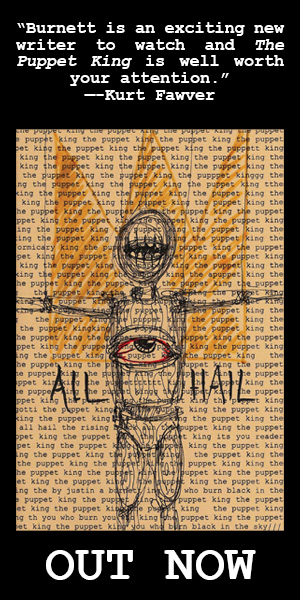
There are several names for Emergency Kits, E-kits, BOB, GOOD, Jump bag etc. Most of us are familiar with the term BOB so that’s what I’ll use in this topic. We all have a general idea what a BOB is but do we know what a personal BOB is?
A personal BOB is a set of items that you carry on your person, Every Day Carry or EDC. I mean that literally (there will be a future post with more details about EDC and the layers/levels to a BOB). EDC is what is in your pockets, on your belt, in your wallet or on your key ring. For most of us that means a cell phone, a pocket knife, a multi-tool and maybe a mini Maglite just to name a few items. You’re probably wondering how you can carry all these items on your person and not end up looking like you’re wearing a Batman utility belt or have your pockets so stuffed they look like a squirrel heading off to hide nuts. There’s only so much belt and pocket space available.

While this is one option that removes clutter from your belt there may be other items you may want to carry based on your employment, work environment or geographical location. Maybe you want to carry a small IFAK, an evacuation smoke mask/hood, some 550 cord, a compass, gloves, small pry bar and other goodies. How can you carry all that on your belt or in a belt mounted pouch?
Not going to happen or you end up with the utility belt look again.

This style of EDC container works for most of us and leaves your belt relatively clear for other items such as a handgun holster, magazine holder and maybe an ASP baton. You can even ‘dummy’ cord the items in the CL pouches so you don’t lose them. (Google dummy cord if you don’t already know what it means. It’s a military term where small items that could get easily lost are attached to you or your load bearing harness with small segments of 550 cord.)
While on the subject of belts, we all have our preferences, some us prefer gun belt leather, or ballistic nylon. My preference is Black Hawk’s Rigger’s belt. Unlike leather that may crease over time from use or the belt holes stretch, a riggers belt is not subject to that. This choice is again not for everyone. But let’s look at some of the benefits of using one. Most rigger’s belt are 1.75†wide so we’ll call that 2†even, it has 7000lbs tensile strength which means you could use it as an emergency rappelling belt. It’s sewn with #5 nylon cord which means that it won’t fray easily. It won’t stretch like leather can do and doesn’t need to be treated after a few years with a leather protector/revitalizer.
Sure, this choice is not for everyone as I mentioned but it does have some serious pros in relation to other material that belts are made of.
Of course, you could always go with a small waist bag or large purse for all these items as the choice is ultimately yours on how and what you’re going to carry on your person and how much you’re going to spend on a personal E-kit.
Let’s look at some ideas for EDC and the different levels that it may entail. This is assuming that you are incorporating some basic first aid supplies into your EDC gear. Not everything listed is considered to be EDC gear. Obviously, you’re going to have to make a decision what is right for your EDC and what would be in your primary BOB. The items listed are a mix of EDC and BOB.
Level 1:
Blister pads and a basic assortment of band-aids and bandages, both waterproof and fabric. Waterproof bandages can be used to mend holes in tents and clothes.
Level 2:
Antiseptic wipes (alcohol based) for treating wounds and cleaning bites, cuts. These can also be ignited by a spark to start a fire.
Level 3:
Water purification tablets, choose tablets or iodine. Make sure you make the right choice or have a supply of both. Do Not use iodine if you’re allergic to it or to shellfish. Remember that all water taken from unknown and some known sources needs to be filtered before being purified. Tablets will probably work better for EDC than carrying around a liquid container of iodine.
Level 4:
A supply of petroleum jelly to be used for chapped lips, rashes, and sores. Can also be smeared onto tampons to make firestarters. Store any and all petroleum jelly in a resealable plastic bag. This is where the time you took to make fire nuggets comes in handy. Personally, having a couple of fire nuggets in your EDC gear and a tube of chap stick covers this.
Level 5:
Waterproof notebook for drawing rough maps or leaving messages. Photograph of a loved one for psychological motivation to survive. Credit card, it can be used to extract insect stings besides the obvious use. Cash money wrapped in cellophane or stored in a resealable plastic bag. If you carry a wallet, you already have Level 5 covered.
Level 6:
Survival saw or pocket chainsaw, single edged razor blade (can be used for skinning small game or cutting cord in the event you lose your knife). Needle and cotton thread, use strong, waxed cotton thread already threaded through the needle. The survival saw and single edged razor is optional, most multi-tools have a small saw blade. If you insist on carrying a single edged razor blade it would be easier to carry inside the IFAK. Using a razor blade to skin game and having it as part of your EDC could be redundant as its more at home in your primary BOB.
Level 7:
Flashlights, note that is plural. Two, pump style or hand crank flashlight as a backup to your battery powered one. Mini or full size multi-tool, another backup to your primary, chainsaw handles for the pocket chainsaw, high visibility signal mirror, compass, another backup to your primary, ferrocerrium rod for firestarting, fire nuggets (mentioned earlier) in a film canister or plastic bag, 50ft of 550 cord for repairs, shelter building and animal snares. The flashlights can be addressed pretty easily. You can get a small LED, AA flashlight through Harbor Freight. Its small enough to stick inside a jacket pocket. If you actually feel the need to carry more than one flashlight, see the mention of Nite-Ize previously. The 550 cord requirement can be covered by having a 550 cord survival bracelet. The other items might be something you place in your primary BOB not so much EDC.
Level 8:
Waterproof matches and more fire nuggets, pencil, potassium permanganate which can be used in small concentrations to sterilize water and clean wounds in high concentrations. Can also be used with sugar to make fire. Store this in a waterproof container. All these items are more for your primary BOB.
Level 9:
Non-lubricated condoms, this is not included because you may think you’re going to get lucky in a survival situation, these can be used to carry water or as a waterproof cover for smaller items like a cell phone. Mini fishing kit, if you’re near water, fish can be easier to catch for obvious reasons. Fishing line has multiple uses. Include a variety of hooks, flies, swivels, and split shots. Primary BOB definitely.
Level 10:
These items can be secured to the outside of your kit if needed or inside depending on what type of container you have chosen. Sailmakers needles, multi-purpose and can be used as an arrow point or for mending tents and tarps, the wide eye type is the best. Safety pins for securing clothing or mending your sleeping bag and tent. Mini-glowsticks, these are useful for emergency lighting and a location aid, they are best stored in toothbrush travel containers. Additional single edged razor blades, multi-purpose use as mentioned previously. More at home in your BOB not so much with your EDC.
While all these items may not be necessary for EDC, most of them are things that you should consider including in a BOB no matter where you are. Its up to you to decide what is required and what you think you’ll need based on your survival plans and region.




